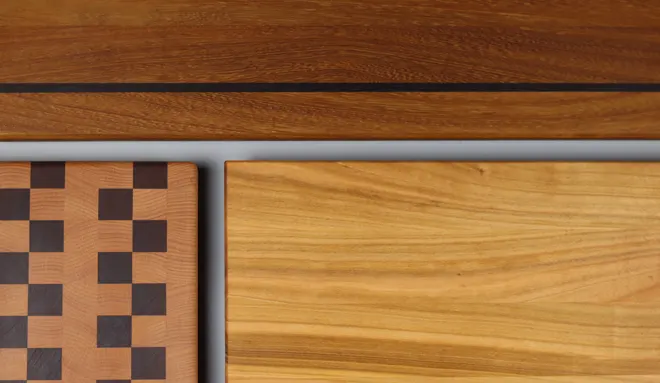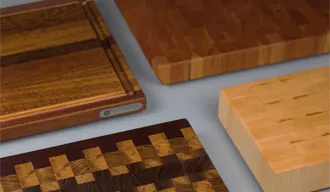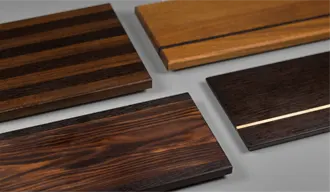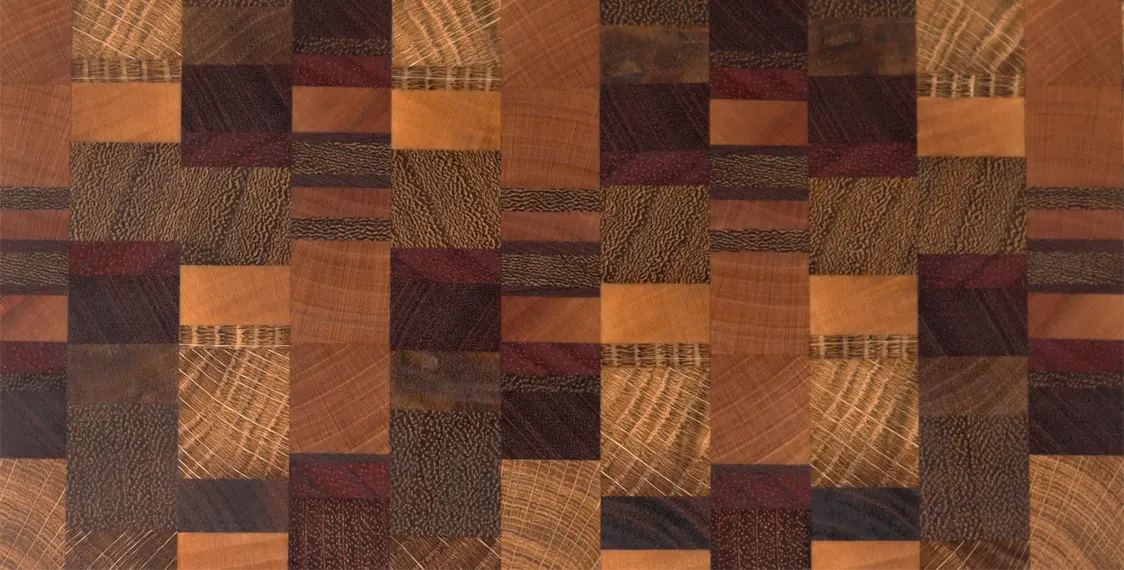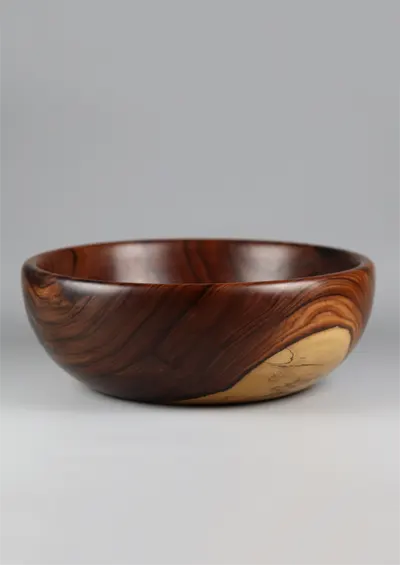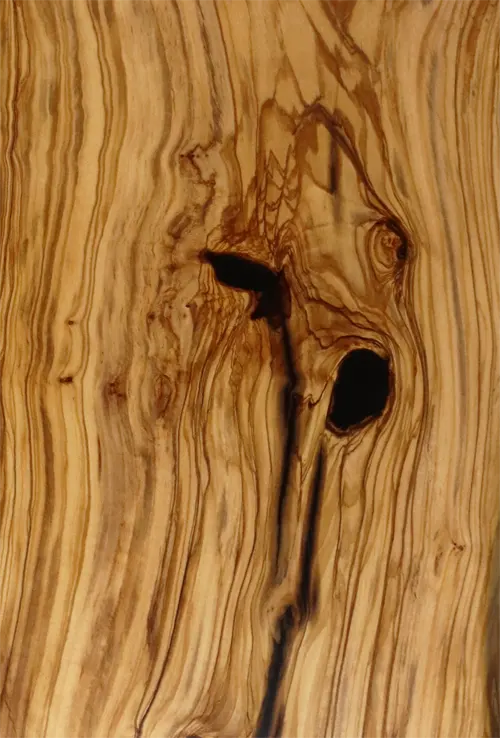What are hardwoods?
What are hardwoods?
The term broadleaf wood (also known as hardwood) refers to tree species that belong to the angiosperm group: deciduous trees (although not exclusively) that produce encapsulated seeds.
This group of woods includes species such as oak, walnut, cherry, and hard maple.
Unlike coniferous woods, which come from gymnosperms such as pine or fir, hardwoods have a more complex cellular structure, with visible conducting vessels and more pronounced growth rings.
This results in denser, more durable, and stronger woods, ideal for jobs requiring precision and durability.
Learn about tropical woods in this other post on our blog.
Technical characteristics of hardwoods
The properties of hardwoods vary by species, but they share a number of common characteristics that make them especially valuable for making products such as cutting boards:
- High density: higher than most softwoods, giving them greater resistance to wear and deformation.
- Hardness and mechanical resistance: ideal for intensive use and direct contact with food and sharp utensils.
- Dimensional stability: less tendency to expand or contract with changes in humidity.
- Natural beauty: complex veins, intense colors, and the possibility of highly aesthetic finishes.
- Longevity: These are durable woods, capable of lasting for decades with proper maintenance.
How do they differ from other woods?
Technically, hardwoods can be differentiated by:
- Microscopic observation of the vessels: the leafy plants have visible pores, often arranged in rings or diffusely.
- Color and texture: They usually have a finer texture and a darker or more nuanced color than softwoods.
- Specific weight: to the touch, they tend to feel heavier and denser.
- Grain: These show more complex grain patterns, which are aesthetically valuable in displayed products.
Main species of hardwoods used
In the manufacture of high-end kitchen accessories like those we offer at Ligna, hardwoods are selected for their combination of aesthetics, durability, and food safety. Among the most recognized and widely used are:
1. Walnut (Juglans regia / Juglans nigra)
- Color: Dark brown to purple with black or gray veins.
- Features: very stable, durable and with an elegant finish.
- Ideal for: premium cutting boards, thanks to their stability and visual appeal.
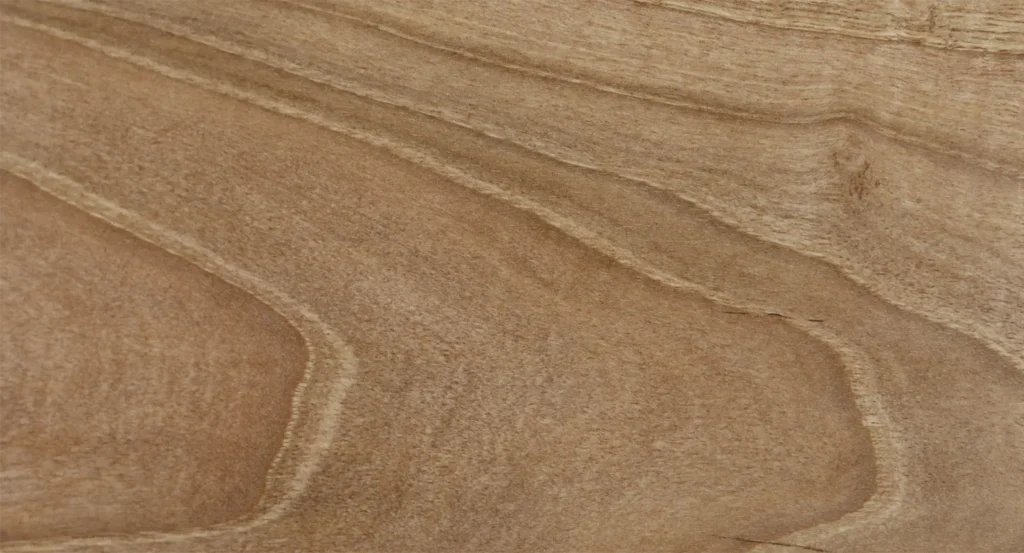
2. Oak (Quercus spp.)
- Color: light brown to gold.
- Features: porous and robust structure, easy to work with, excellent durability.
- Ideal for: cross-grain and end-to-end cutting boards.

3. Hard Maple (Acer saccharum)
- Color: creamy white to light brown.
- Characteristics: very dense and homogeneous, with fine pores.
- Ideal for: professional cutting boards, due to their color neutrality and hygiene.

4. Cherry (Prunus serotina)
- Color: Warm reddish that darkens over time.
- Features: good workability, silky texture.
- Ideal for: serving boards with decorative value, due to their changing tone.
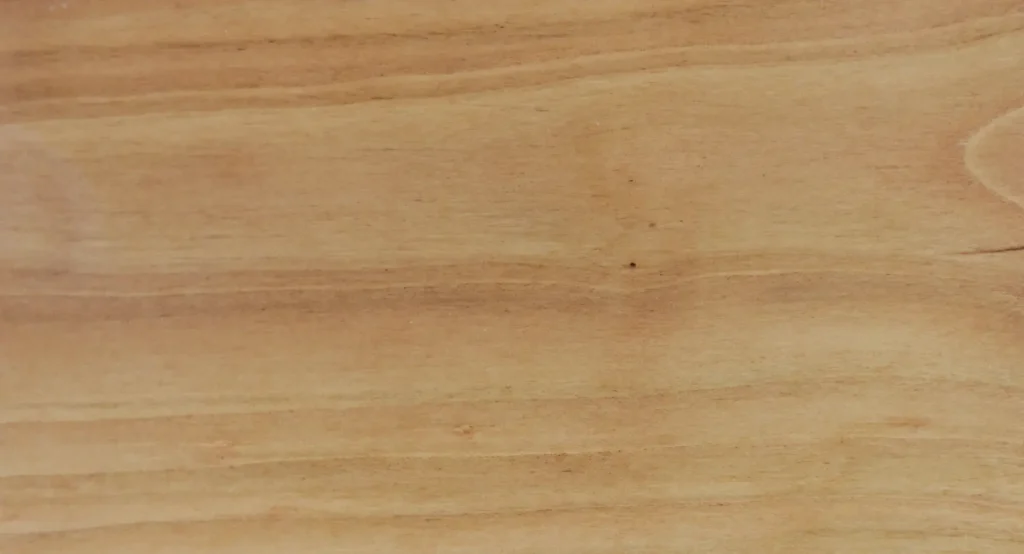
5. Birch (Betula spp.)
- Color: pale white to yellowish.
- Features: fine grain, good strength, smooth surface.
- Ideal for: lightweight, modern accessories such as trays or presentation plates.
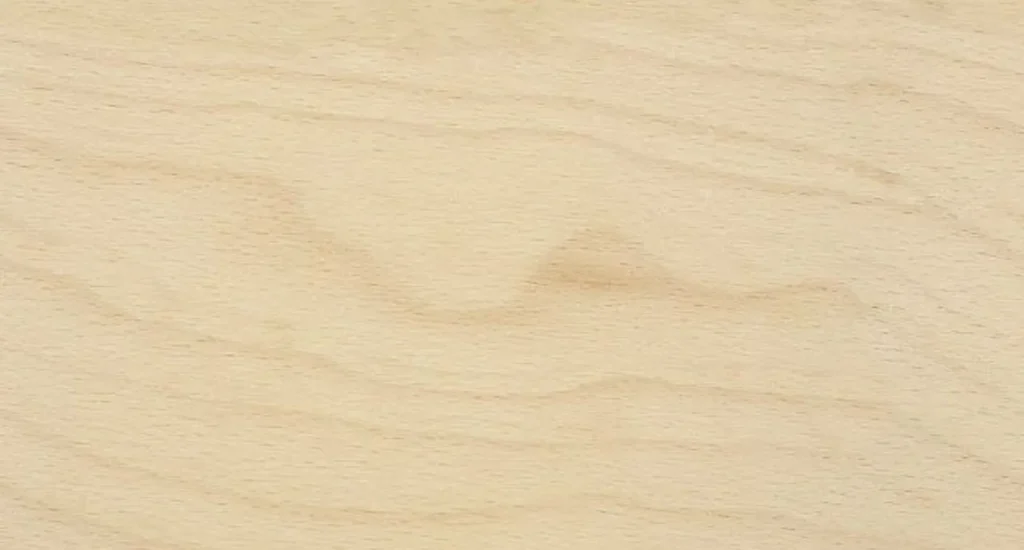
Advantages of hardwoods in kitchen accessories
The use of hardwoods in cutting and serving boards is no coincidence. Beyond their appearance, these species offer key functional advantages:
- Greater resistance to cutting and abrasion.
- Less porous surfaces, which prevents the accumulation of bacteria.
- Compatibility with natural protective oils.
- Excellent response to manual or industrial sanding and finishing.
Therefore, at Ligna, each board is made with a rigorous selection of these species, respecting the grain and direction to ensure maximum strength and durability.
Sustainability and responsible origin
In a context of growing ecological awareness, the origin of the hardwoods used in kitchen products is crucial. The hardwoods we use at Ligna come from sustainably managed forests and, in most cases, have international certifications such as:
- FSC (Forest Stewardship Council): guarantees that the wood comes from responsible sources.
- PEFC (Programme for the Endorsement of Forest Certification): promotes sustainable forest management from origin to final product.
Furthermore, the longevity of these products reduces the need for frequent replacement, contributing to the circular economy and reducing environmental impact.
Conclusion
Hardwoods are the foundation of functional, durable, and beautiful products. Their selection and use in kitchen accessories such as cutting and serving boards respond to technical, aesthetic, and ethical criteria.
At Ligna, we work with these species to guarantee high-value products that combine tradition, design, and environmental responsibility.
FAQ: Frequently Asked Questions About Hardwoods
What are hardwoods?
Hardwoods, also known as broadleaf woods, come from broadleaf, generally deciduous trees belonging to the angiosperm group. These woods are characterized by their dense and resistant structure, making them ideal for applications requiring durability and aesthetic appeal.
What are the main technical characteristics of hardwoods?
Hardwoods are notable for their high density, hardness, and mechanical strength. They exhibit superior dimensional stability, with a lower tendency to expand or contract with changes in humidity. They also offer natural beauty with complex grain and intense colors, and remarkable longevity with proper maintenance.
How do hardwoods differ from softwoods?
Hardwoods come from broadleaf trees and are generally denser and more durable than conifers, which come from evergreen trees like pines and firs. Hardwoods have a more complex cellular structure, with visible conducting vessels and more pronounced growth rings.
What hardwood species are most commonly used?
Among the most common species are oak, walnut, cherry, beech, maple, and ash. These woods are prized for their strength, beauty, and versatility in a variety of applications, from furniture to musical instruments.
What advantages do hardwoods offer in kitchen accessories?
Hardwoods are ideal for kitchen accessories due to their hardness and wear resistance. Their dimensional stability makes them less prone to warping, and their natural beauty adds an aesthetic touch to utensils such as cutting boards and kitchen utensils.
How do you identify hardwoods from others?
Technically, hardwoods can be identified by microscopic observation of their vessels, which are visible pores often arranged in rings or scattered throughout. These characteristics distinguish them from other woods, such as conifers.
Are hardwoods sustainable?
The sustainability of hardwoods depends on their origin. It’s essential to ensure they come from responsible and sustainably managed sources, with certifications such as FSC or PEFC, to ensure forest conservation and biodiversity.
What care do hardwoods require?
To maintain the beauty and durability of hardwoods, it is recommended to clean them with a damp cloth and dry them immediately. Avoid direct sunlight and sudden temperature changes. Applying specific oils or protectants can help preserve their appearance and durability.
In what applications are hardwoods commonly used?
Hardwoods are widely used in the manufacture of furniture, flooring, musical instruments, interior and exterior woodwork, and kitchen accessories. Their strength and aesthetic appeal make them suitable for applications requiring durability and a high-quality finish.
Where can I purchase quality hardwood products?
At Ligna.es, we offer a variety of products made from high-quality hardwoods, including cutting boards and kitchen accessories. All our products are sustainably sourced and designed to combine functionality and aesthetics in your kitchen.
Otras entradas del blog
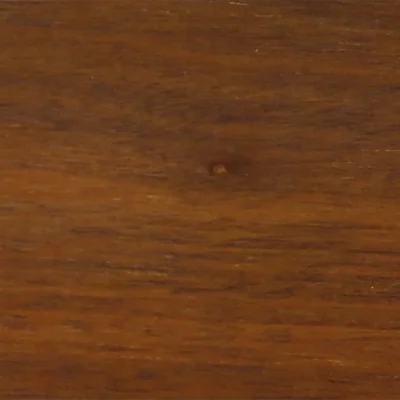
Outdoor wood: a complete guide

Cutting Board Oil: A Complete Guide to Options and Recommendations
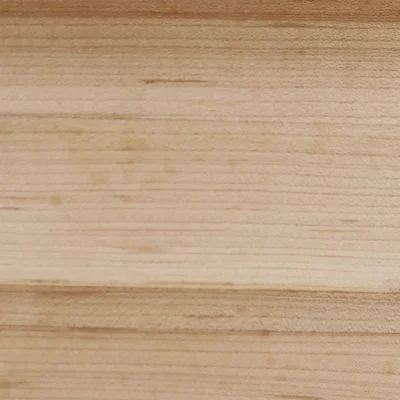
White wood: Common Species and Uses

How to Care for Wood Cutting Boards like a Pro
Nuestras tablas de cortar:
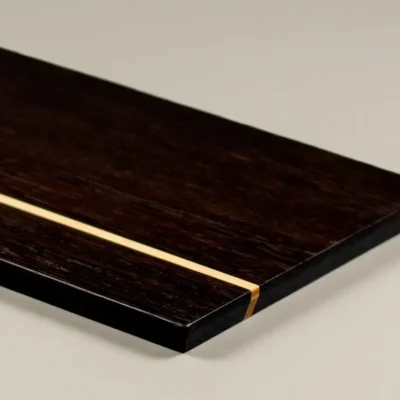
NIGRA
serving board
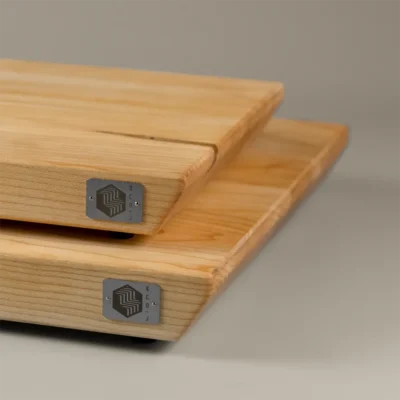
Linea
Maple grain maple board
Linea
Maplegrain maple board
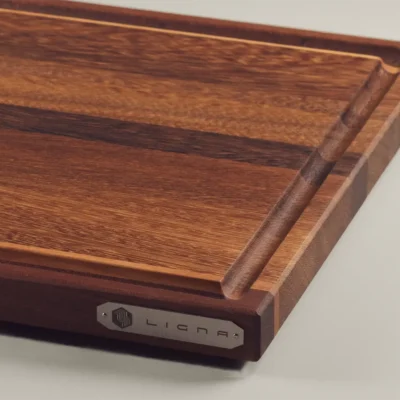
Chroma
large carving board

UMBRA
serving board
